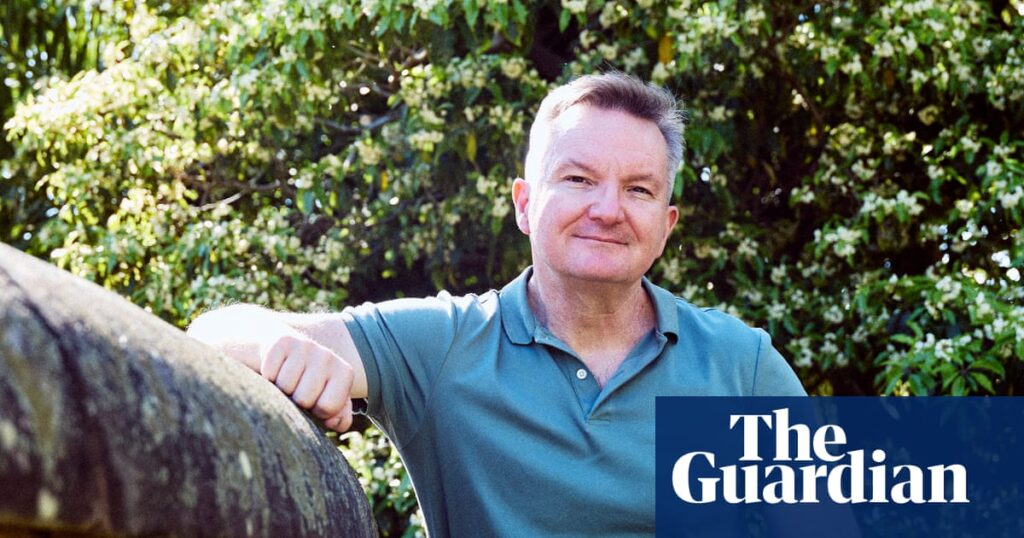
Progress on the climate crisis is often slow and frustrating. However, when opportunities arise, change can sometimes occur rapidly. On July 1, the Australian government introduced a subsidy scheme for small battery systems, reducing costs for most households by approximately $4,000, or 30%. The response has been swift, with more than 1,000 batteries being installed across the country each weekday.
This initiative has increased the total energy storage capacity in homes by about 25% in just two months, with the strongest uptake in regional and outer suburban areas. The climate change and energy minister, Chris Bowen, is eager to highlight this success, emphasizing not only the speed of installations but also their distribution. This suggests the scheme is not merely a welfare program for the inner-city wealthy, as some critics alleged. Bowen describes the initial results as “sort of at the extreme end of how I thought it might go.”
Bowen’s Vision and Constituency
Bowen’s confidence in the program was partly influenced by Australia’s experience with rooftop solar systems, which have been widely adopted in both suburban and urban areas. Sitting in his electorate office in Fairfield West, western Sydney, Bowen reflects on how his constituents perceive climate change and energy. His seat of McMahon, located over 30 km from Sydney’s CBD, is a culturally diverse area where more than 70% of residents have at least one parent born overseas, and about 60% speak a language other than English at home.
Bowen notes that while climate change may not be the primary concern for most people in his constituency, it remains a significant issue. He argues against the misconception that climate change is only a concern for inner-city elites, stating, “People know that climate change is real, particularly those with family in the Pacific, Indonesia, or South Asia.”
Policy Success and Future Challenges
The success of the battery program was not only welcome but necessary. It was the only new climate policy Labor took to the May federal election. Despite challenges in rolling out large-scale renewable energy, the government plans to release a series of reports and commitments before the UN General Assembly. These will include a national climate risk assessment, economic modeling, and a plan to reach net zero emissions by mid-century.
The centerpiece will be an emissions reduction target for 2035, likely expressed as a target range. This target will indicate how much the Albanese government prioritizes the climate crisis and set the framework for future policy development. For Bowen, this represents a defining moment. He has already become Australia’s longest-serving climate change minister and will become the most experienced energy minister if he remains in his role until the next election in 2028.
“This is the key to our prosperity, both on the positive [if we get it right] and the negative impacts if we get it wrong,” Bowen states.
The Economic Argument
Bowen’s background in economics shapes his approach to the portfolio. He recalls a conversation with Anthony Albanese, who emphasized the need for an economist in the role to win the economic argument for climate action. Bowen believes the moral argument is largely settled, except for a minority of climate change deniers.
He aims to counter “junk economics” around nuclear energy and net zero, a stance that has drawn criticism for focusing more on mocking opponents than accelerating the climate response. Bowen argues that the opposition’s position creates policy uncertainty, which businesses dislike. He stresses the importance of irreversible change, likening it to Medicare or superannuation.
Setting Targets and Overcoming Hurdles
The government faces pressure from various groups regarding the 2035 emissions target. Business groups and environmental advocates have lobbied for different levels of action, while scientists argue for deeper cuts to meet global commitments. Bowen agrees that the target should be science-based but notes that the Climate Change Authority must also consider economic and social factors.
Australia’s target will require new policies beyond existing measures to support large-scale solar, wind, and battery projects. Officials estimate these will only achieve about a 51% cut by 2035. Bowen suggests further cuts could come from increased household electrification and vehicle-to-grid technology.
Transportation remains a significant challenge, with fossil fuel-powered cars having long lifespans and clean aviation fuels developing slowly. Bowen does not advocate for reduced air travel, emphasizing the need for sustainable solutions that do not restrict personal freedoms.
The Rise of Electric Vehicles
Bowen is optimistic about the rise of electric vehicles (EVs), noting the rapid market changes and increased consumer choice. He believes the availability of diverse EV models will drive further adoption.
“There will be models available that you’ve never heard of, that are cheap, that are expensive, that are short range, that are long range, that are fancy, that are practical. You take your pick,” he says.
As Bowen works on setting an ambitious yet achievable emissions target, he acknowledges the importance of effectively communicating the government’s decisions to the public. “Just with the facts,” he asserts, highlighting the ongoing challenge of balancing ambition with practicality in Australia’s climate strategy.





